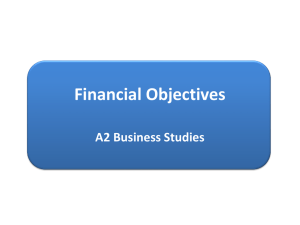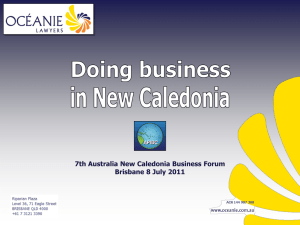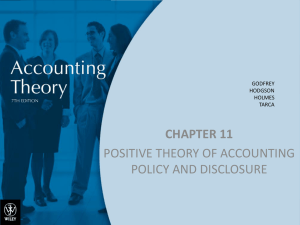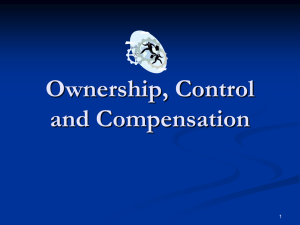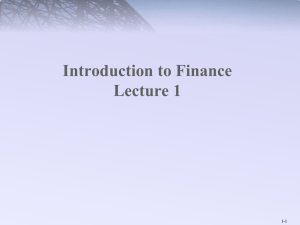Whether Parent Shareholders were connected persons of
advertisement
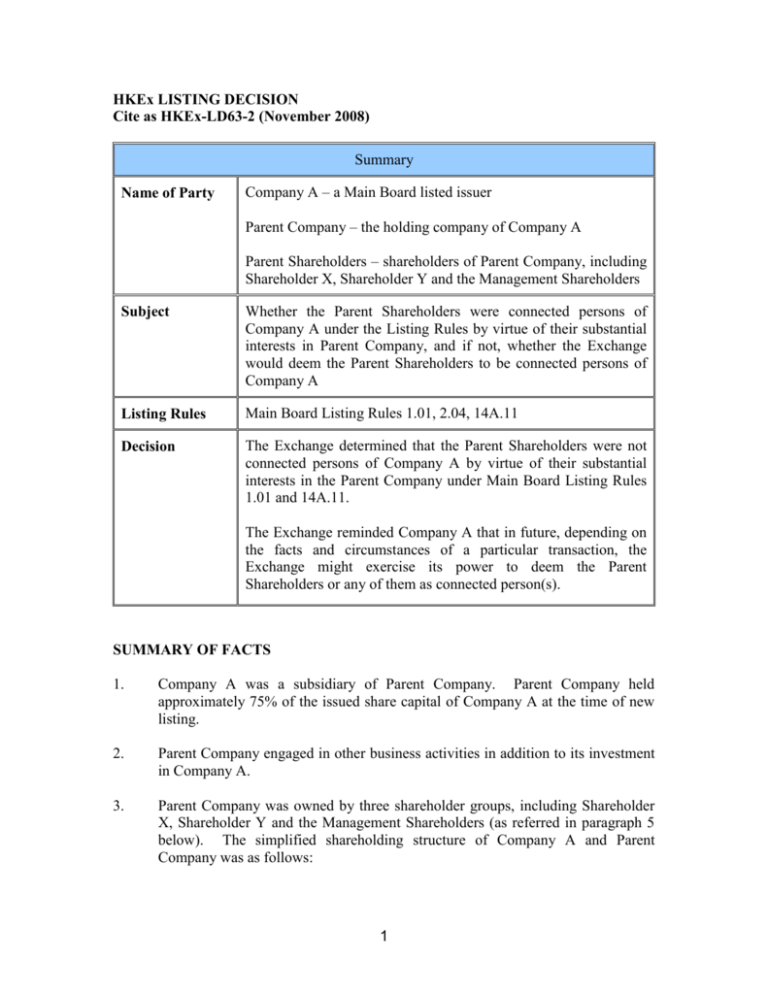
HKEx LISTING DECISION Cite as HKEx-LD63-2 (November 2008) Summary Name of Party Company A – a Main Board listed issuer Parent Company – the holding company of Company A Parent Shareholders – shareholders of Parent Company, including Shareholder X, Shareholder Y and the Management Shareholders Subject Whether the Parent Shareholders were connected persons of Company A under the Listing Rules by virtue of their substantial interests in Parent Company, and if not, whether the Exchange would deem the Parent Shareholders to be connected persons of Company A Listing Rules Main Board Listing Rules 1.01, 2.04, 14A.11 Decision The Exchange determined that the Parent Shareholders were not connected persons of Company A by virtue of their substantial interests in the Parent Company under Main Board Listing Rules 1.01 and 14A.11. The Exchange reminded Company A that in future, depending on the facts and circumstances of a particular transaction, the Exchange might exercise its power to deem the Parent Shareholders or any of them as connected person(s). SUMMARY OF FACTS 1. Company A was a subsidiary of Parent Company. Parent Company held approximately 75% of the issued share capital of Company A at the time of new listing. 2. Parent Company engaged in other business activities in addition to its investment in Company A. 3. Parent Company was owned by three shareholder groups, including Shareholder X, Shareholder Y and the Management Shareholders (as referred in paragraph 5 below). The simplified shareholding structure of Company A and Parent Company was as follows: 1 Shareholder X Shareholder Y 43%* 32%* Management Shareholders 25% Parent Company 75% Company A * including interest held by wholly owned subsidiaries of Shareholder X/Y 4. Shareholder X and Shareholder Y were the major corporate shareholders of Parent Company. Each of Shareholder X and Shareholder Y was a separate entity with its own business activities and its securities were listed on an overseas stock exchange. 5. The Management Shareholders comprised 4 individuals (including Mr. A and Mr. B) who were founders and members of the management of Parent Company. Mr. A and Mr. B were also directors of Company A. 6. The Parent Shareholders had entered into a shareholders’ agreement (the “Shareholders’ Agreement”) before listing of Company A which governed relationship of these shareholders in respect of Parent Company. 7. Based on the shareholding structure of Parent Company and the terms of the Shareholders’ Agreement, each of the three groups of Parent Shareholders was in a position to exert influence over Parent Company through approval/veto rights on significant matters relating to Parent Company and its subsidiaries, but none of them had control over Parent Company. 8. As Company A was not a party to the Shareholders’ Agreement, the arrangements among the Parent Shareholders in terms of approval/veto rights on significant matters relating to Company A (being a subsidiary of Parent Company) under the Shareholders’ Agreement were not binding on Company A and its board. Neither Company A nor its board had any obligation to ensure the implementation of the Shareholders’ Agreement. THE ISSUE RAISED FOR CONSIDERATION 9. Whether the Parent Shareholders were connected persons of Company A under the Listing Rules by virtue of their substantial interests in Parent Company; and if 2 not, whether the Exchange would deem the Parent Shareholders to be connected persons of Company A. APPLICABLE LISTING RULE OR PRINCIPLE 10. Main Board Listing Rule 1.01 defines, among others, the terms “associate”, “substantial shareholder” and “connected person” as follows: “associate” (b) in relation to a company means: (i) any other company which is its subsidiary or holding company or is a fellow subsidiary of any such holding company or one in the equity capital of which it and/or such other company or companies taken together are directly or indirectly interested so as to exercise or control the exercise of 30% (or such other amount as may from time to time be specified in the Takeovers Code as being the level for triggering a mandatory general offer) or more of the voting power at general meetings, or to control the composition of a majority of the board of directors … “substantial shareholder” “connected person” in relation to a company means a person … who is entitled to exercise, or control the exercise of, 10% or more of the voting power at any general meeting of the company … in relation to a company …, means “a director, chief executive or substantial shareholder of such company or any of its subsidiaries or an associate of any of them, and (a) … 3 11. Main Board Listing Rule 14A.11 provides that for the purposes of Chapter 14A, the definition of “connected person” includes: (1) a director, chief executive or substantial shareholder of the listed issuer; … (4) any associate of a person referred to in rules 14A.11(1), (2) or (3). … In this Chapter, an “associate” of a person referred to in rules 14A.11(1), (2) or (3) includes the following additional persons:(a) any person or entity with whom a person referred to in rules 14A.11(1), (2) or (3) has entered, or proposes to enter, into any agreement, arrangement, understanding or undertaking, whether formal or informal and whether express or implied, with respect to the transaction which is such that, in the opinion of the Exchange, that person or entity should be considered a connected person; (b) any person cohabiting as a spouse with, and any child, step-child, parent, … of a person referred to in rules 14A.11(1), (2) or (3); and (c) a father-in-law, mother-in-law, … of a person referred to in referred to in rules 14A.11(1), (2) or (3) whose association with the persons referred to in rules 14A.11(1), (2) or (3) is such that … ANALYSIS 12. The general definition of “connected person” is contained in Rule 1.01. For the purposes of the connected transaction rules, the definition of “connected person” is extended by Rules 14A.11 and 14A.12. 13. In the present case, Parent Company was a substantial shareholder, and therefore a connected person, of Company A under Rules 1.01 and 14A.11 by virtue of its 75% equity interest in Company A. Whether the Parent Shareholders were connected persons of Company A under the Listing Rules by virtue their substantial interests in Parent Company 14. When determining whether the Parent Shareholders were connected persons of Company A under Rules 1.01 and 14A.11 by virtue of their substantial interests in 4 Parent Company, the Exchange had considered whether the Parent Shareholders were (i) substantial shareholders of Company A or (ii) associates of Parent Company under the Listing Rules. In this regard, the facts of the case indicated that: - None of the Parent Shareholders had control over Parent Company. Accordingly, no individual Parent Shareholder was able to exercise or control the exercise of 10% or more of the voting power at any general meeting of Company A even though such person’s indirect interest in Company A through Parent Company was more than 10%. The Parent Shareholders did not fall under the definition of “substantial shareholder” set out in Rule 1.01 in respect of Company A. - None of the Parent Shareholders were associates of Parent Company pursuant to the definition of “associate” under Rules 1.01 and 14A.11(4). In particular, there was no evidence suggesting that Parent Company was a subsidiary of any Parent Shareholder. Based on the facts presented, none of the Parent Shareholders were connected persons of Company A under Rules 1.01 and 14A.11 by virtue of their substantial interests in Parent Company. 15. Notwithstanding the above and for the avoidance of doubt, Mr. A and Mr. B were connected persons of Company A under Rules 1.01 and 14A.11 by virtue of their positions as directors of Company A. Whether the Exchange would deem the Parent Shareholders to be connected persons of Company A because of their substantial interests in Parent Company 16. Rule 2.04 provides that the Listing Rules are not exhaustive and that the Exchange has discretion to, among others, modify the existing requirements under the Listing Rules and impose additional requirements as it considers appropriate. The Exchange will have regard to all of the relevant facts and circumstances of the case in its determination of whether to exercise its discretion under Rule 2.04. In circumstances where the definition of “connected person” is technically inapplicable to a particular person/entity due to certain specific arrangements, the Exchange will look at the substance of the arrangements and consider whether thy have been structured to circumvent the spirit and intent of the rules. In such circumstances, it may be appropriate to “deem” such person/entity as connected person under Rule 2.04. 17. In the present case, should the Parent Shareholders hold shares in Company A directly instead of through Parent Company, Shareholder X and Shareholder Y would be substantial shareholders of Company A under Rule 1.01. There was a question of whether the structure of Parent Company was a means to circumvent the Listing Rules, and if yes, it would be necessary to “look through” the structure 5 of Parent Company and deem the Parent Shareholders as connected persons of Company A. In making the determination, the Exchange had taken into account the following factors: - Parent Company had a number of business activities and it was not a single purpose undertaking established for the sole and dominant purpose of holding its investment in Company A. - Other than their interests in Parent Company, the three groups of Parent Shareholders were independent from each other. The Shareholders’ Agreement governed the relationship of the Parent Shareholders in respect of Parent Company and the approval/veto rights of the Parent Shareholders on certain significant matters concerning the Parent Company and its subsidiaries (including Company A). While each group of Parent Shareholders was able to exert influence over the Parent Company through its approval/veto rights under the Shareholders’ Agreement, there was no evidence indicating that the Parent Shareholders must act together or in the same direction in respect of matters relating to Company A. 18. Based on the facts of the case, there were no suggestions that the structure of Parent Company and the Shareholders’ Agreement were designed to circumvent the Listing Rules. The Exchange considered that the then relationship among the Parent Shareholders was not sufficient to warrant the Exchange exercising its power to deem the Parent Shareholders as connected persons of Company A. 19. Notwithstanding the above, the Exchange noted that minority shareholders of Company A could be potentially disadvantaged if the Parent Shareholders were to act together and cause Company A to enter into transactions with either one of them which minority shareholders might have been minded to vote against if they had the right to do so. The Exchange therefore reminded Company A that in future, subject to the specific facts and circumstances of a particular transaction, the Exchange might exercise its power to regard the Parent Shareholders or any of them as connected person(s). DECISION 20. The Exchange determined that none of the Parent Shareholders were connected persons of Company A under Rules 1.01 and 14A.11 by virtue of their substantial interests in Parent Company. 21. The Exchange reminded Company A that in future, subject to the specific facts and circumstances of a particular transaction, the Exchange might exercise its power to regard the Parent Shareholders or any of them as connected person(s). 6


